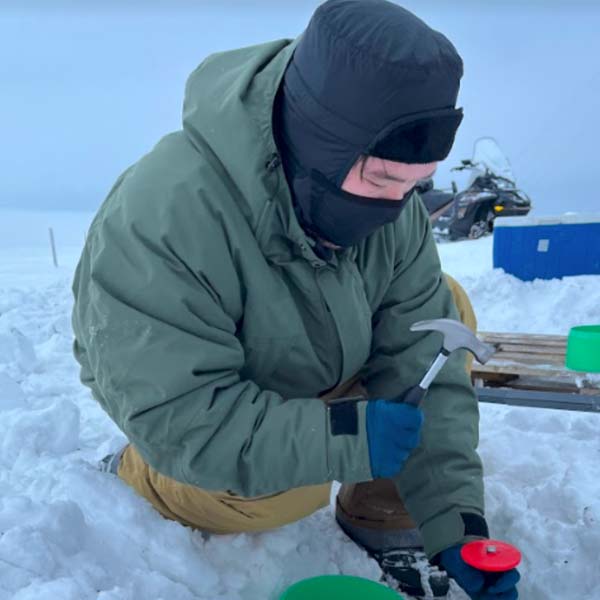Jake Perez
News

Jake Perez
Doctoral student Jake Perez is using fieldwork in the high Arctic and supercomputer-based simulations to better understand how thawing permafrost will influence the Earth’s carbon cycle. Permanently frozen soils, or permafrost, are rapidly thawing in the Arctic. Microbes in these newly thawed soils transform organic matter to greenhouse gasses, such as carbon dioxide and methane. Perez and his advisor Drew Steen, along with colleagues Karen Lloyd of the Department of Microbiology, Tatiana Vishnevetskaya of the Center for Environmental Biotechnology, and collaborators at Princeton University, Oak Ridge National Lab, and Pacific Northwest National Lab have been funded by the Department of Energy to study the microbial processes that drive these transformations.

The first step in soil organic matter degradation process is mediated by extracellular enzymes, digestive enzymes that soil microbes secrete to begin the degradation process. In 2022, Perez, Drew and the rest of the Arctic Microbial Permafrost Degradation team traveled to Svalbard, an archipelago in the Arctic Ocean that is among the fastest warming places in the Arctic, to sample soils. The team measured gas fluxes in situ and collected soils for enzyme measurements, as well as for DNA to understand what microbes are present in the soils and what their metabolic capabilities are. Drilling frozen soil in cold weather was a challenge, but he helped to collect 10 meters of rocky, frozen soils from four boreholes around the study site. Back in Knoxville, Perez is working with Professor David Keffer of the Department of Materials Science and Engineering to create computer simulations of how these extracellular enzymes interact with soil minerals. Once extracellular enzymes are secreted by soil microbes, they interact with the chemically complex soil environment. Since enzymes are often charged, many will sorb, or attach, to soil minerals. It has long been assumed that this causes the enzymes to deform, making them less effective at breaking down organic matter. However, this has been a challenge to study empirically, because most of the microbes in soils that produce extracellular enzymes do not grow in labs, so it is difficult to obtain samples of their enzymes to study directly. However, new breakthroughs in deep learning have allowed us to accurately predict the structures of enzymes based only on the DNA that codes for them. Armed with those predictions, Perez is using UT’s supercomputer ISAAC to simulate what happens to these enzymes interacting with soil minerals. These simulations will reveal which enzymes sorb most effectively to soil minerals, which minerals they sorb to most effectively and whether they are likely to become deformed and therefore change function when they do. We hope these environmental measurements combined with simulations will lead to a better understanding of how the warming Arctic will change the Earth’s climate.